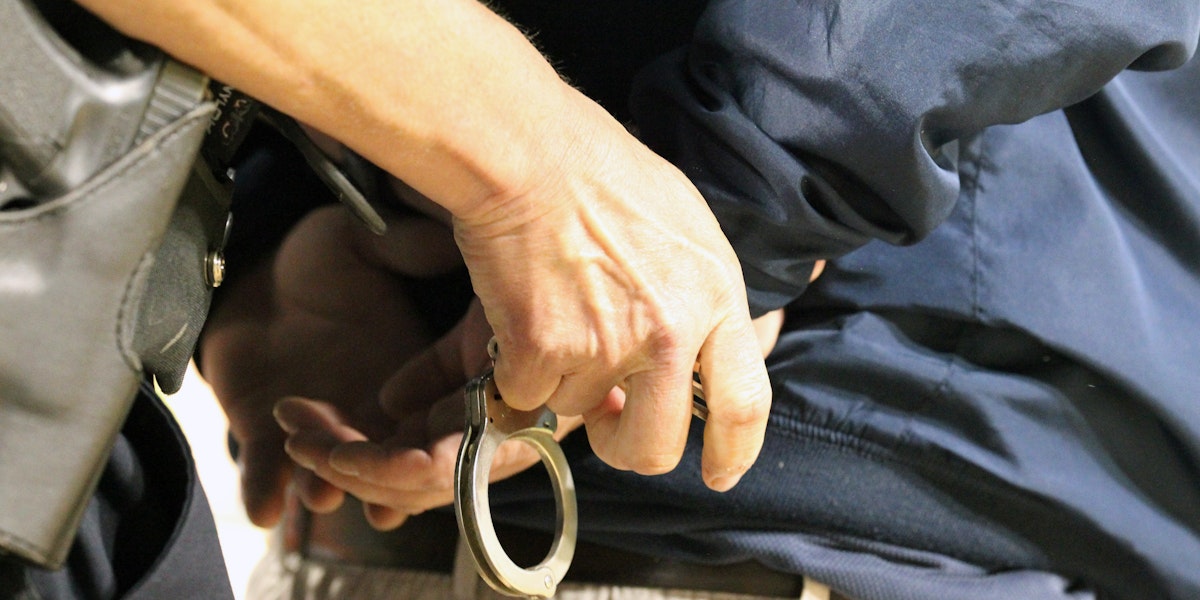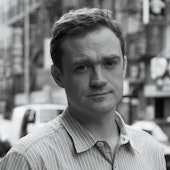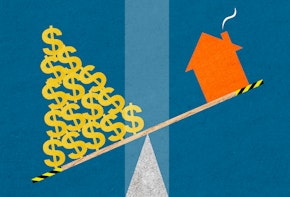Introduction
Long before Eric Garner was choked to death by a police officer on Staten Island, or Michael Brown was fatally shot by a cop in Ferguson, or Walter Scott was shot in the back by an officer in North Charleston, or Freddie Gray slipped into a coma after his spine was severed in the back of a police van, it was abundantly clear—or it should have been—that antagonism between American law enforcement and young black men had reached a dangerous breaking point. No one who has been reading the news and is not deluding themselves could conclude that dramatic reform is not urgently needed, and the Obama administration, along with local police departments in jurisdictions across the country, has begun to explore potential reforms.
As it happens, the turbulence of the past year has coincided with the publication of two major books on the issue of policing in black communities. Alice Goffman’s On the Run: Fugitive Life in an American City is a work of sociology (Goffman is a professor at the University of Wisconsin), and Jill Leovy’s Ghettoside: A True Story of Murder in America is a work of reportage (Leovy is a longtime journalist with the Los Angeles Times). Both books are based on years of deep research in poor, predominantly African-American neighborhoods, and both have been hailed as landmark contributions to our understanding of these fraught issues. Yet in terms of policy prescriptions, the books appear to arrive at diametrically opposite conclusions. Goffman argues that the inhabitants of America’s poor black neighborhoods have been policed too much; Leovy argues that, on the contrary, they have been policed too little.
The Penal State Mentality
As a graduate student at the University of Pennsylvania, Goffman spent six years in one Philadelphia neighborhood; she refers to it by a pseudonym, “6th Street.” During those years she grew extraordinarily close (too close, by some accounts) with an extended network of family and friends, including a group of young black men who often found themselves dodging the police.
Goffman describes On The Run as “an on-the-ground account of the U.S. prison boom,” but her story is mostly occupied with reverberations of that boom as they register outside the prison walls, in urban neighborhoods where young men are too often cycling in and out of the system. She is interested in the “more hidden systems of policing and supervision,” and she notes that “the fear of capture and confinement has seeped into the basic activities of daily living.”
What Goffman describes is a culture of social control, a penal state mentality that has managed to entrench itself outside prisons themselves, in ostensibly free and liberal American cities. Goffman cites the war on drugs as an impetus for this system and the prison boom itself: during the 1970s, penalties for possessing, buying, and selling drugs were dramatically increased. (Penalties for violent crime, prostitution, gambling, vagrancy, and other infractions were increased as well.) With an array of increasingly severe sanctions at their disposal, Goffman notes, the number of police officers per capita in American cities increased dramatically.
But what was intended as a tough-on-crime crackdown ended up stigmatizing and alienating whole segments of society, as police officers antagonized young men, shaking them down (and not gently) for minor, non-violent offenses. After an initial ensnarement in the criminal justice system, it was often difficult for the black youths Goffman writes about to disentangle themselves. The systems of probation and parole are calibrated for easy violation, and they endow local cops with extraordinary discretion to decide who does and doesn’t end up back behind bars.
“Whatever their effect on crime, the sheer scope of policing and imprisonment in poor Black neighborhoods is transforming community life in ways that are deep and enduring,” Goffman writes, “not only for the young men who are their targets but for their family members, partners and neighbors.” She describes a climate of fear that turns working-class urban neighborhoods into “communities of suspects and fugitives.” The police who work these neighborhoods know that the threat of prison is an extraordinary form of leverage, and they will deploy it to recruit informants and to induce the friends, even family members, of young men to turn them in.
The authorities seem poignantly unaware of the tyrannical undertones of this kind of project; Goffman describes a computer program for mapping warrants and people who are on probation or parole that is used to identify potential informants who can be strong-armed into cooperating. The program was devised by a local FBI agent who found inspiration “after watching a documentary about the Stasi.”
According to Goffman, this surfeit of control has altered communities in a manner both profound and perverse. “A new social fabric is emerging under the threat of confinement,” she suggests, “one woven in suspicion, distrust and the paranoiac practices of secrecy, evasion, and unpredictability.” And for all the social ills of this kind of policing, there is very little to show for it: violent crime may be down, but the reasons for that are complicated, disputed, and likely not attributable in any straightforward sense to police tactics. The availability of drugs, meanwhile, has not diminished to any significant degree.
More to the point, Goffman is describing a system of hair-trigger trip-wires, any one of which can send a young man back to lockup. And in that respect, the approach is actually counterproductive, in that it creates “entirely new domains of criminality.” In an environment in which the police can upend a young man’s life on the merest of pretexts, it should be little wonder that someone like Walter Scott might choose to run from the cops. (Never mind resisting: in Goffman’s interviews with police officers in Philadelphia, she was told that they “have orders from their captains that any person who so much as touches a cop ‘better be going to the hospital.’”)
This is “the great paradox of a highly punitive approach to crime control,” Goffman concludes: “it winds up criminalizing so much of daily life as to foster widespread illegality as people work to circumvent it.” As a result, “intensive policing and the crime it intends to control become mutually reinforcing.”
Policing, and Still Crime
Notwithstanding this police presence, crime has remained disproportionately high in poor, black neighborhoods. Jill Leovy started covering homicide for the Los Angeles Times in 2001, and in 2006, she launched a blog, The Homicide Report, in which she endeavored to account for the day-by-day toll of killings in the city. Over a decade of reporting, she focused on a couple of neighborhoods in south Los Angeles and attempted to make sense of the fact that, whereas black men represent just 6 percent of the nation’s population, they make up nearly 40 percent of its murder victims.
Five decades after the civil rights movement, Leovy concluded that the foremost race problem in the United States is “impunity for the murder of black men.” She describes this tide of sudden deaths as an epidemic that is invisible, for the most part, to the rest of the country, absent from most national dialogue on race and criminal justice precisely because the victims are black. Young black men are “the nation’s number one crime victims,” Leovy points out, and when they are killed, there is a perception that these lives are “cheap”—that black lives don’t matter. The perpetrators are most often other black men and boys who, because these crimes so often go unsolved, “still roam free.”
Leovy would likely find little to quarrel with in Goffman’s account, but in her view the problem with policing in black neighborhoods is that “it is at once oppressive and inadequate.” Whereas police have, in recent decades, exerted themselves in the pursuit of small-time offenses and “quality-of-life” crimes in precisely the manner that Goffman details, they have also tended to overlook the more difficult business of solving homicides. Politicians and the press focus on spectacular murders, but in the background, Leovy argues, there is a great deal of dying going on, most of it by young black men.
“The institutions of criminal justice, so remorseless in other ways in an era of get-tough sentencing and ‘preventive’ policing, remained feeble when it came to answering for the lives of black murder victims,” she finds. Leovy attributes this failure to catch killers to a variety of factors, one of which is resources: the detectives she describes do their work on a shoestring, often having to purchase their own supplies. Only the most dedicated (or obsessive) among them avoid burnout.
This is a delicate issue, both for the black community and for the political left. Leovy (who is white) acknowledges that “to assert that black Americans suffer too little application of the law, not too much, seems at odds with common perception.” In the aftermath of each new report of police brutality (or murder) of black victims, a chorus of rightwing apologists will take to the airwaves and question why the black community—or President Obama himself—are not “doing something” about black-on-black crime. Leovy notes that for some leaders in the black community, this is a difficult issue to address publicly, a source of embarrassment and shame—“like incest,” one street activist in Los Angeles tells her—and that it might be a tactical error to emphasize a problem that “seems sure to be used against them.”
But Leovy makes a devastating and unassailable case that the murder of black men by other black men is not some indigenous pathology of the community, but rather, it is precisely the outcome of inadequate policing. “[The] perceived harshness of American criminal justice and its fundamental weakness are in reality two sides of a coin, the former a kind of compensation for the latter,” she writes.
Departments may have channeled extraordinary resources in recent decades to policing black communities, but in practice they have focused not on protecting those communities (by most accounts, their raison d’etre) but instead on pursuing small-bore infractions, harassing residents they deem suspicious, and—importantly—waving the flag. Leovy recounts a Swiftian perversion of “broken windows” policing, in which the Los Angeles Police Department during the 1990s would position empty “decoy” squad cars at an intersection in a rough neighborhood to function as a kind of scarecrow, reminding the local populace that the police were ever-present. Officers were sometimes instructed to speed around a community with their lights flashing, not because they were pursuing any particular crime, but merely as a display of force.
Solving a murder is hard work, and when it comes to black-on-black homicides, Leovy describes a pervasive cynicism among detectives and an explicit view, as one cop she quotes puts it, that “there are no victims here.” Even those officers who do not share this kind of callous racism cite the fact that it’s very hard to solve a homicide in a community where there is a strong stigma attached to “snitching,” or cooperating with the cops, and this is indeed an estimable hurdle for investigators. Leovy quotes a detective saying that most homicides in south Los Angeles are “just one witness away” from being solved.
Yet surely this is an instance in which the police themselves share some of the blame: the antagonistic policing that Goffman describes sows tremendous distrust between the authorities and the local population. That mutual antipathy has reached a point, Leovy suggests, where snitching is “sometimes seen as borderline racial betrayal, a concession to a law enforcement system that had not served blacks especially well.”
But it’s also true, from the practical point of view of the individual who is weighing the costs and benefits of cooperating, that at least half-a-dozen people who do cooperate are murdered every year in Los Angeles. Those who elect not to work with the cops may be operating not out of any personal antagonism or in deference to some exotic cultural code, but rather on the rational assessment that a department that can neither prevent nor solve murders in black neighborhoods may be ill-equipped to protect its own witnesses from reprisal.
This is the deepest, and most disturbing, revelation in Leovy’s book: that neglect by law enforcement has given rise to a culture of criminal impunity, which in turn leads to more murder. “[W]here the criminal justice system fails to respond vigorously to violent injury and death, homicide becomes endemic,” she writes. “Murder outbreaks… are more than just the proliferation of discrete crimes. They are part of a whole system of interactions determined by the absence of law.” She points to examples throughout history—including white, European history—where this has been the case. “Wherever human beings are forced to deal with each other under conditions of weak legal authority, the Monster lurks,” she writes.
More Cops, Fewer Cops
How do we reconcile these two views of policing? Do we need a less robust presence by the police in poor, predominantly black neighborhoods or a more robust presence? A recent article in The New Yorker quotes a saying in a neighborhood in Shreveport, Louisiana: “the police were never there when you needed them, only when you didn’t.” If we could somehow invert that paradox, that might be part of the answer.
There have been numerous proposals in recent months for police reform. It is indisputable that departments need to become more racially integrated, and that—ideally, though this is often difficult to engineer in practice—the police force should be drawn directly from the community itself, rather than from remote suburbs and outlying areas.
But on a deeper level, departments will need to reconfigure their missions: they are there to protect the community, rather than to control it. In an interesting irony, Leovy notes that detectives will sometimes resort to busting a suspect on drug charges or parole violations as a “proxy” for graver crimes, like assault or homicide, that they know the suspect has committed but that they are unable to prove. Enforcement of parole and probation has become “a kind of shadow legal system, sparing the state the trouble of expensive prosecutions,” she writes. But while this kind of jerry-rigging may seem expedient in the short run, Goffman makes clear that the long-term effects of such policing are enormously deleterious to the lives and freedom of the individuals in the community, to the relationship between the police and the policed—and, ultimately, to public safety.
“While it’s true that poorer communities are more susceptible to drugs and violence, having more police there turns the police not into a protecting force but a surveilling one,” Goffman writes. The answer may lie not in the numbers of deployed personnel, but in who those individuals are, how they relate to the community members they serve, and the kinds of cases they actually spend their days pursuing.
The hero of Leovy’s book is an anomalously dogged and noble homicide detective, John Skaggs, and it is impossible to finish the book without wishing he was not such an anomaly. To be a great homicide investigator in the ghetto, Leovy observes, you need the “incompatible attributes” of “youthful energy and master craftsmanship.” But just as negative cycles can be reinforcing, positive developments can occasionally reinforce one another, too. A thawing of relations between police departments and urban neighborhoods will be necessary if these departments are going to recruit a new generation of dedicated, upstanding officers from the community itself. And the presence of such a new breed on the streets could, in turn, contribute to the thaw.
Photo Credit: Flickr, KeithAllisonPhoto.com










